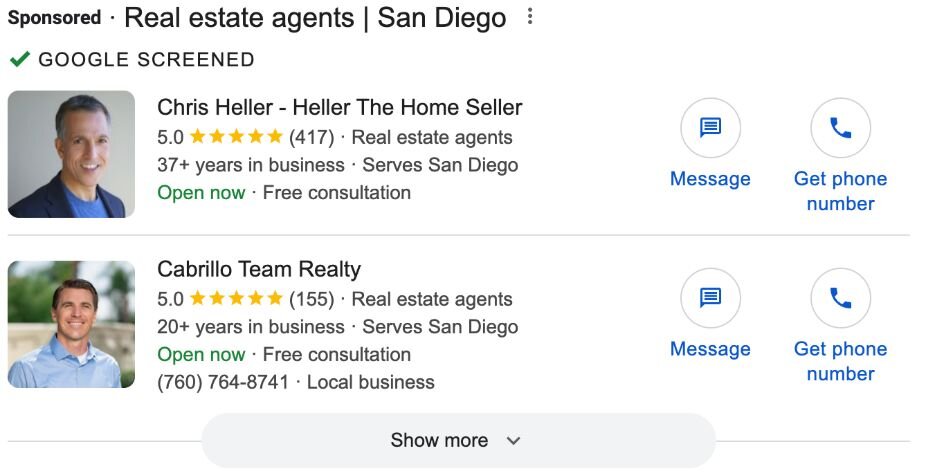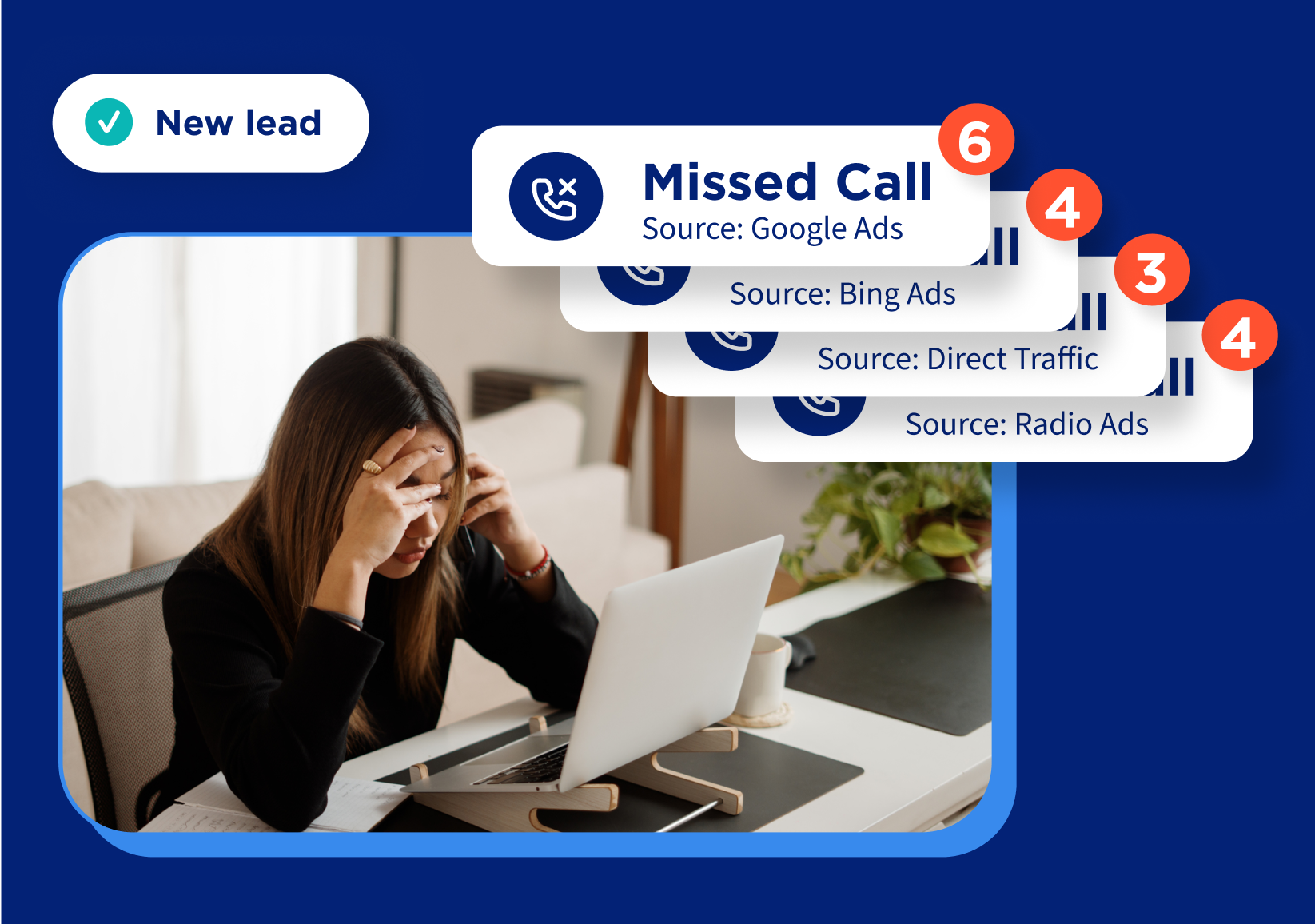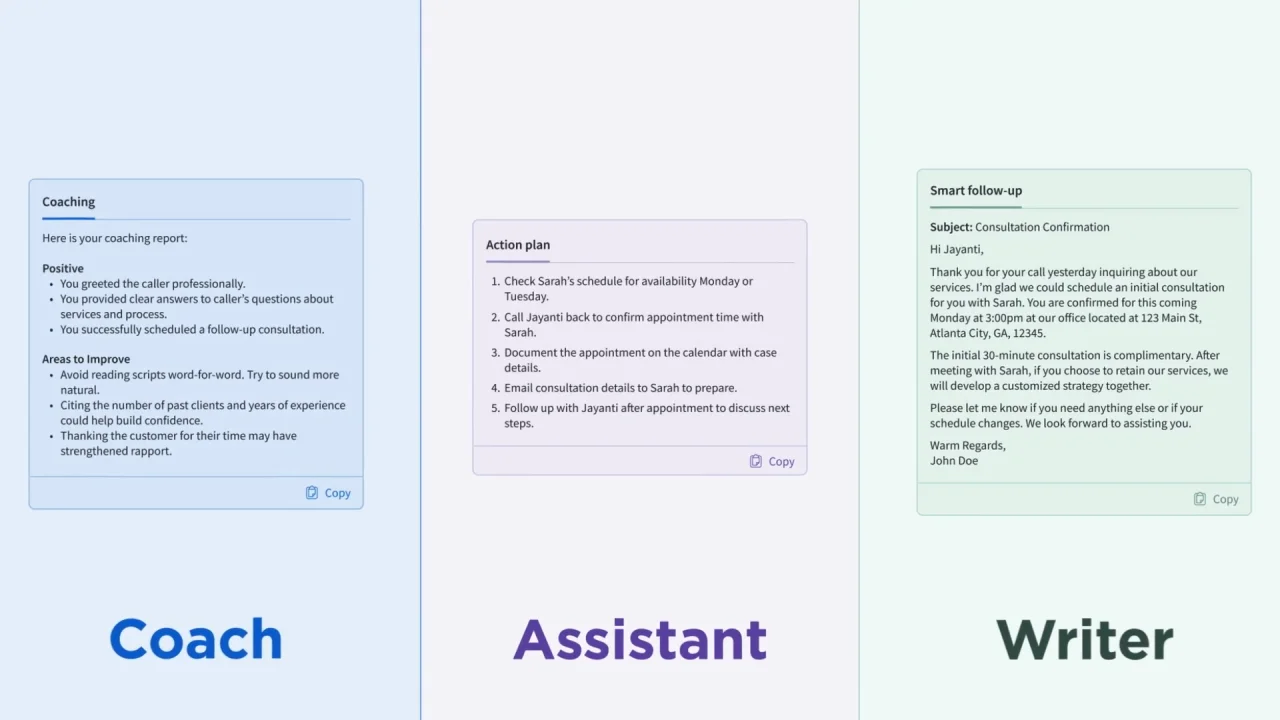As a realtor, your small-but-mighty team is busy juggling phone calls, showings, and paperwork. In the everyday hustle, it’s easy for marketing to fall by the wayside. That’s especially true today, as real estate marketing can often feel like chasing trends on new social media platforms or adopting new technology like GenAI.
In this post, we’ll cover 9 common marketing mistakes realtors make and what they can do to improve their strategies and tactics, helping them build their brand, generate more leads, and close more deals.
1. Your strategy is too broad. Instead, start locally.
In real estate, you’re not just selling homes — you're selling the community. Home buyers, sellers, or renters want to work with someone who’s an insider. When they start their search, it likely includes a city name or zip code — and your business should be at the top of the list for those searches.
One of the best ways to capitalize on your prospects’ localized searches is by setting up and maintaining a Google Business Profile that includes key information on your business. When paired with local service ads and click-to-call ads, that new-to-the-area couple driving around looking at houses can easily call your business from their phones.
For this approach, call tracking is essential to help you track, optimize, and measure the value of your ads by providing key insights into which ads work best to generate quality leads. With advanced conversation analytics, you can even help you understand what ideas and sentiments are driving your best leads.

2. Your content is generic. Instead, tailor your brand to your market.
Knowing your target demographic is important for digital marketing and building your brand’s credibility. Staying on top of nationwide trends, like the decreasing share of first-time buyers (32% in 2023 to 24% in 2024) is important, but so is understanding and tailoring your approach to your market’s unique demographics.
Let’s say you sell properties in an up-and-coming city that attracts creative millennials, like Raleigh, North Carolina. If your brand can tap into the language and trends of that group, it can be easier to connect to that audience when you’re putting a starter home on the market that would be perfect for a family in that age range.
3. Your visuals are uninspiring. Instead, invest in great photos and videos.
According to the National Association of Realtors, 96% of home buyers use the internet to search for homes. For nearly nine in ten buyers under the age of 57, the most useful website feature was the photos. Whether you invest in professional photographers and home staging services or simply use your phone’s camera, your photos need to tell the story of the property.
When taking photos, think about the key features each property has, and center your photography around flaunting them. For example, if your property boasts a nice dining area, don’t take a picture of it with blown-out backlighting and in a way that makes it feel small. Instead, get the lighting and composition right and use a wide-angle lens. It’s the difference between these two shots:

Great photography not only helps your website, but it helps you on image-focused social media sites like Instagram.
4. Your social media is too corporate. Instead, bring an authentic perspective.
Social media is overrun with brands and influencers putting out perfectly polished content. But research shows that what consumers want from brands the most online is authenticity.
You probably find that simply posting listings on your social media channels doesn’t earn the engagement or results you’re looking for. That’s because people don’t want to feel like they’re being sold something constantly.
Create an authentic personality online, whether it’s on a text-only site like Threads or a video-first site like TikTok. Build relationships, be funny, champion causes outside of selling homes — it doesn’t matter how you do it. Home buyers, sellers, and renters, like all consumers, want to know there’s a real person with real values that they’re connecting to on your social media channels.
5. Your messaging is stale. Instead, listen to your clients and adapt.
Social media isn’t the only place you need to bring an authentic perspective. If your content, from blogs and social media posts to your ads and real estate listings, is not evolving alongside your clients, it’s not going to be effective.
Of course, it’s impossible to be on every call and track every topic. That’s why conversation intelligence tools that track sentiment, identify trends, and help surface new keywords are critical for helping you stay in touch with your clients. For example, if you notice that clients are increasingly looking for neighborhoods with high-speed internet for remote work, you can feature that in your advertising and listings more prominently.
6. Your hours don’t match your clients’. Instead, be the first responder.
Buying or renting a new home is a time-intensive project — and for many of your prospective clients, that means browsing listings or making inquiries during evenings and weekends, outside your normal working hours. But, in today’s fast-paced world, 78% of consumers go with the first company that responds to them, which means a missed call could be a missed opportunity.
To stay responsive even when you're unavailable, look for tools that can bridge the gap during off-hours. Features like voicemail transcription and auto-reply text messages can help you quickly triage and follow up with leads. More advanced solutions — like AI-powered virtual assistants — can go a step further by answering calls, screening leads, summarizing conversations, and even collecting intake details, so you're never starting from scratch when you call back.
7. Your name isn’t known around town. Instead, get involved in your community.
The most important factor for prospective clients when choosing a home is the quality of the neighborhood (59%) — more important even than affordability (36%), according to the NAR. You’re in the business of buying and selling homes in your community. You need your business’s name to be linked to the identity of the area.
That’s why it’s important to take your online local ads a step further by sponsoring community events. It’s a way to genuinely give back to your community, while also promoting your brand.
The creative potential is endless, but here are some examples to get your gears turning:
- Sponsor a little league team
- Host a tour of homes
- Host a happy hour for new residents to your city
- Sponsor a DIY craft event with local artisans
- Host a historic tour of your city (check out Manhattan real estate agent Jeff Goodman’s tour)
Quality of the neighborhood (59%), convenience to friends and family (45%), and overall home affordability (36%) remained the most important factors to recent home buyers when choosing a neighborhood. (Source: NAR)
8. You’re using AI ineffectively. Instead, use AI strategically to support your team.
It can seem like AI is everywhere, and as a small business, it probably feels overwhelming. Tools like ChatGPT, which can quickly generate content or visuals with a few sentences, can be a tempting option for time and resource-limited teams to solve content marketing needs. But in a world where authenticity is key and your trustworthiness is paramount to clients, AI-generated images that look artificial or off-brand can do more harm than good.
That doesn’t mean AI has no place in your workflow. When used strategically, AI-powered assistants can save real estate marketers time while still delivering a high-quality, personalized experience. For example, tools like CallRail’s Convert Assist can turn call transcripts into:
- Coaching tips to break down what went well and where you can improve on client calls
- An action plan with a bulleted list of next steps for each client call
- Smart follow-ups to help you quickly draft and send follow-up emails after every call.
By adopting the right tools, you can get back valuable time without compromising the personal touch that sets your service apart.
9. Your client relationship ends at the deal close. Instead, build relationships to foster good word-of-mouth marketing.
It’s easy to fall off past clients’ radars after closing, but don’t forget the importance of referrals for generating traffic to your listings. By maintaining strong relationships with past clients, you can stay top of mind and increase your chances of a referral. To do this, give past clients a reason to continue following you on social media and staying in touch.
Here are a few creative ideas:
- Thoughtful housewarming gifts: It’s not uncommon to send housewarming gifts, but you can make yours more personal than a bottle of nice wine. Pay attention to details in the buying process to give your client a gift they’ll remember. For example, if your client mentioned they plan to fill the house with greenery, get them a unique house plant from a local nursery.
- Content: Share useful content on your social media channels that recent home buyers would find useful. Examples include DIY projects, renovation tips, decor inspiration, etc.
- Give your gratitude: People love feeling special, so remind your past clients that you’re thinking of them. You can send well wishes on major holidays and special occasions. If you’re friends on social media with past clients, you could send a small care package for major life updates, like having a baby, getting married, or even adopting a dog.
Keeping these connections can help you generate more positive reviews online and leave you top of mind for word-of-mouth marketing.
Put on a better showing for your business with CallRail
Staying connected to your community and your clients is critical for your real estate business. With CallRail, you have the tools you need to track, understand, and take action on every conversation with clients.
See how CallRail can open the door to better real estate marketing by starting a free 14-day trial today, no credit card required.













